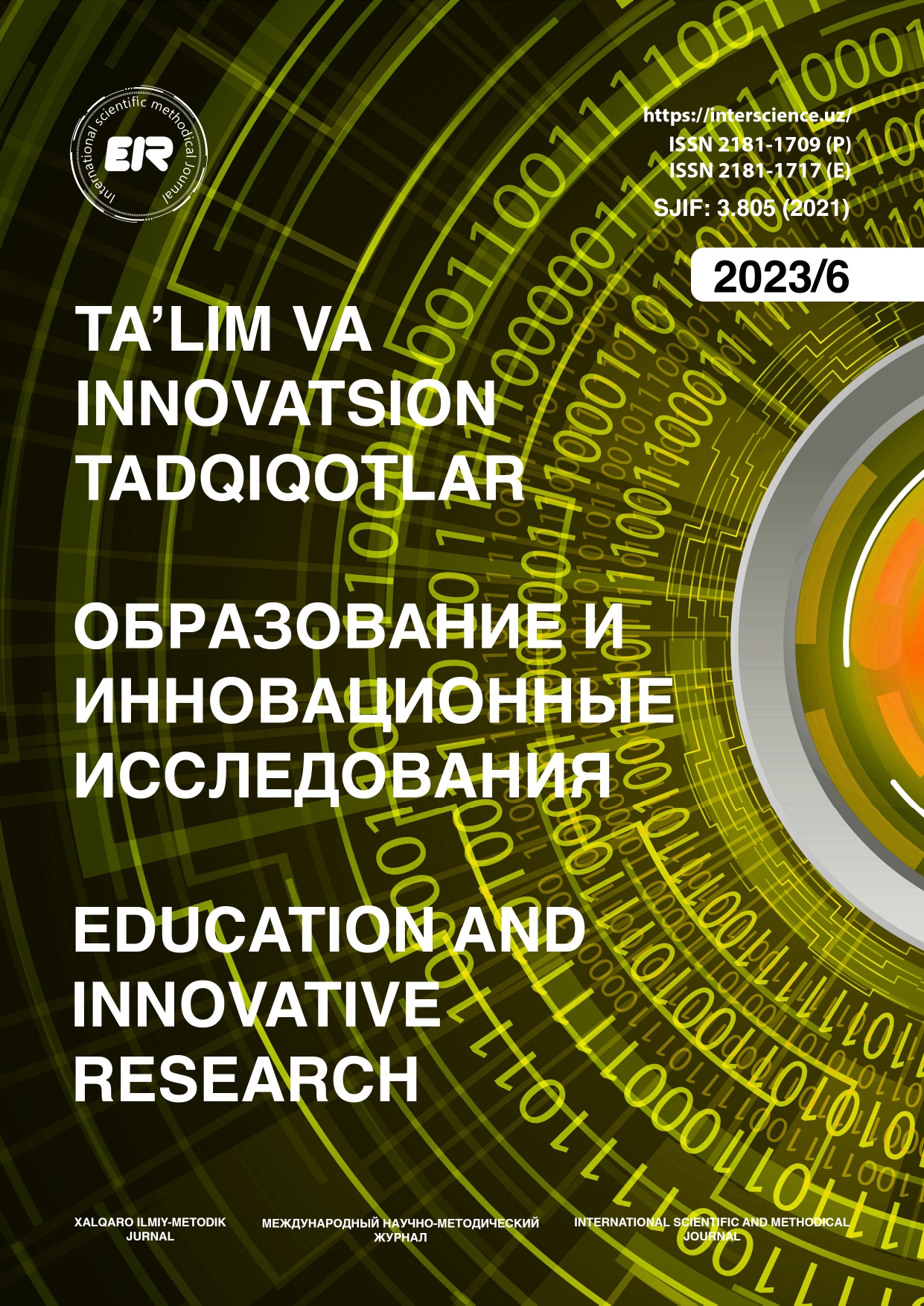NATIONAL-CULTURAL SPECIFICS OF NUMERAL PHRASEOLOGICAL UNITS
Rejapov Izzatbek Olimbayevich Teacher of the second foreign language department Uzbekistan State World Languages University Tashkent, Uzbekistan
Keywords:
numerals; phraseological units with numeralcomponents; language world picture; national-cultural specifics; symbolic meaningAbstract
The article deals with the study of national specifics of phraseological units with numeral component in the English and Uzbek languages. The topicality of the study is due to the fact that numerals from ancient times were endowed with sacred and symbolical meanings and were an important component of the language world picture of any ethnic group. The results of the study showed that the national-cultural specifics of these phraseological units is formed under the influence of the following factors: 1) the symbolic meanings of numerals; 2) the influence of religious factors; 3) mythology and legends; 4) historical facts and events; 5) traditions and customs. The universal character of the mumerals’ symbolic meanings determines the existence of similar in semantics phraseological units both in English and in Uzbek. Differences in religion, mythology, history, traditions and customs of the English and Uzbek linguocultures determine the existence of certain phraseological units with a numeral component in one of the languages and their national-cultural specificity.
References
Ashurova D.U., Galieva M.R. Cultural Linguistics. – Tashkent, VneshInvestProm, 2019. – 208 p.
Вайсгербер Л. Родной язык и формирование духа. – Москва, 1993. – 232 с.
Воробьёв В. В. Лингвокультурология (теория и методы) – М.: Академия, 2008. – 331с.
Гак В.Г. Сопоставительная лексикология: на материале французского и русского языков. М., 1977; 2-е изд. 2010
Галиева М.Р. Вербализация концептосферы Word/Сўз/Слово в английской, узбекской и русской языковых картинах мира. – Ташкент, Дисс. канд.филол. наук, 2010. – 178 с.
Гумбольдт В. Избранные труды по языкознанию [Текст]: Пер. с нем. / В. Гумбольдт; Общ. ред. Г. В. Рамишвили; Послесл. А. В. Гулыги и В. А. Звегинцева. - М.: ОАО ИГ «Прогресс», 2000. – 400 с.
Колшанский Г. В. Объективная картина мира в познании и языке. – М.: Наука, 1990. – 108 с.
Красных В. В. «Свой» среди «чужих»; миф или реальность? – М.: Гнозис. 2003. – 375 с.
Маслова.В.А Лингвокультурология: М.:Изд.центр академия,2007. - 208 с.
Пименова М. В. Душа и дух: особенности концептуализации. – Кемерово: 2004. − 385 с.
Попова З. Д., Стернин И. А. Когнитивная лингвистика. – М.: Восток Запад, 2007. – 314 с.
Телия В. Н. Русская фразеология: семантический, прагматический и лингвокультурологический аспекты / В. Н. Телия. М. : Школа «Языки русской культуры», 1996
Тер-Минасова С.Г. - Война и мир языков и культур Слово изд. 2008
Юсупов Ў.Қ. Маъно, тушунча, концепт ва лингвокультурема атамалари хусусида// Стилистика тилшуносликнинг замонавий йўналишларида. Илмий-амалий конференция материаллари тўплами. Т.: 2011 б.57





